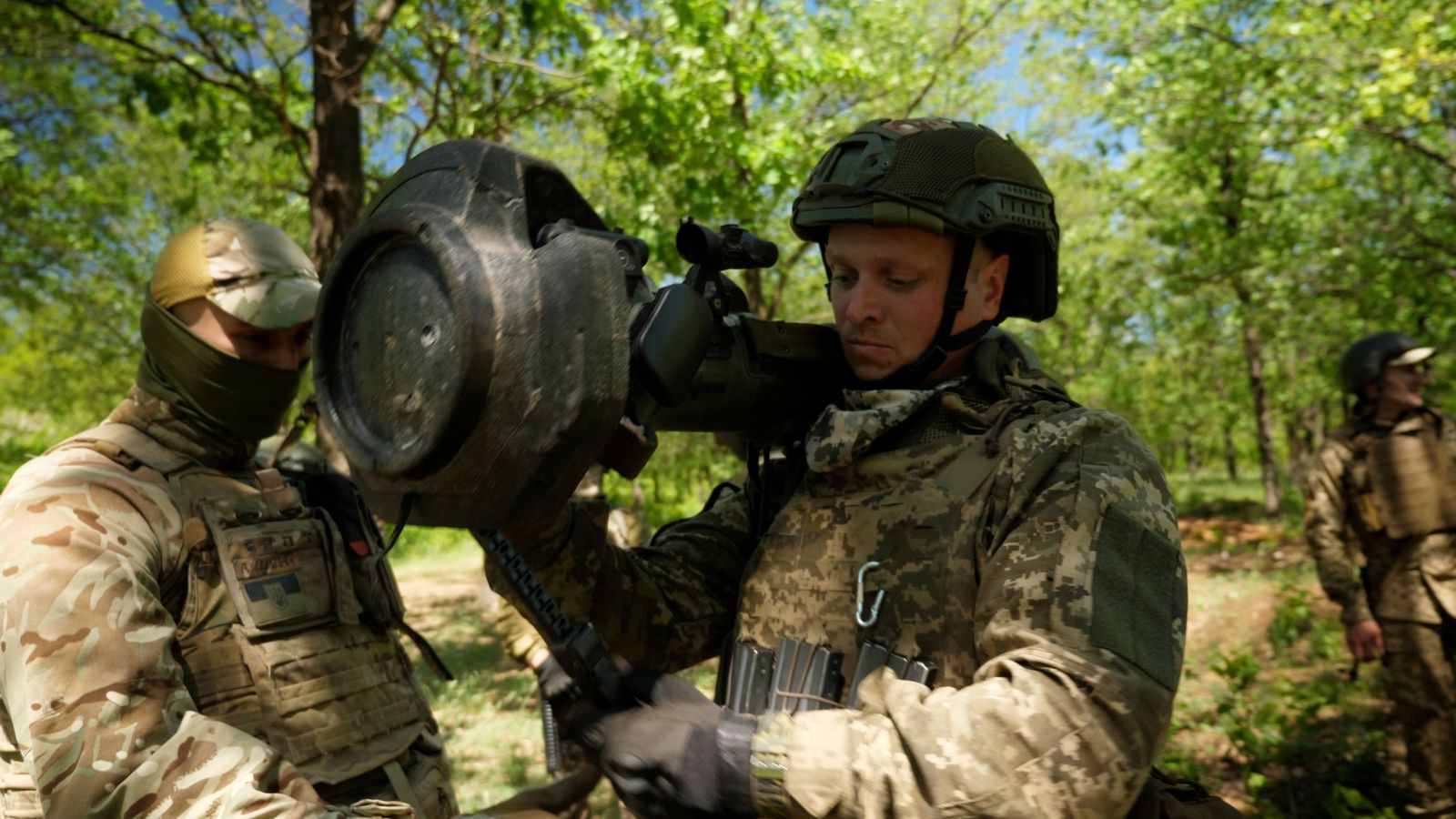No profits for companies. Wartime economy.
Yeah. Government-owned companies producing shells that probably wouldn’t pass QC in “the west”, and paying employees a pittance in comparison. Also at least based on aerial photos, Russians seem to use contact fuzes a lot (you can see the difference from the “splash” patterns) which are a lot cheaper than airburst / multifunction fuzes, but admittedly those might well have been old Soviet stock and their new production could well be more modern.
Still, regardless of the fuze used it’s no surprise that Russian production is cheaper.
Reportedly the Russian factory workers are being paid quite well. And the lack of quality is just a myth I think. There’s no indication that’s actually true.
The real reason prices in the West are so high is that there’s a shortage, and shells are supplied overwhelmingly by private contractors, and so the price has multiplied thanks to supply-and-demand market logic.
You may think the Efficient Free Market Knows Best™, so shouldn’t they increase production? Think again. They’re making record profits right now. Meaningfully increasing production involves building new factories for billions of dollars/euros, which might be ready in a year or two. By then the war will be over and they would have overcapacity, which would be inefficient and prices would plummet. Why would they do that to themselves?
So they’re in a great negotiating position vis a vis desperate Western governments. They want guaranteed profits, of the same sort they’re making right now, or else the shortage continues.
Reportedly the Russian factory workers are being paid quite well.
Paid well for Russian factory workers
And the lack of quality is just a myth I think. There’s no indication that’s actually true.
Then you haven’t been paying attention.
Yes lmao, let’s just ignore the overall abysmal precision, the anti-air defense that strikes it’s own cities, the exploding shells upon firing, etc. No lack of quality here.
Yeah, there’s a reason why they suddenly have a lot of trouble selling their military hardware even to countries that haven’t sanctioned them.
Well, other reasons in addition to the fact that the stuff they’re fielding themselves in Ukraine keeps getting blown the fuck up and they have had to replace it with something that was initially being built for an outside customer. “Yeah you remember those tanks you ordered? Weeelll you’re not going to be getting them quite on schedule, there’s been some… uh… complications. The turrets… they, uh… experienced rapid unplanned disassembly caused by… uh… assembly workers smoking in the crew compartment. Definitely not caused by inferior westoid antitank missiles in Ukraine, our cope cages work against those 100% of the time and it’s not like we’d use your tanks in combat, no siree Bob”
I’d love to see a comparison to the best western 155 round, vs the best RU 155 round and whatever rice-filled horrorshells North Korea is sending russia lol
Russian military is building their own while West is buying from others. Obviously the Russian’s gonna be better and cheaper then westerners.
What makes you think that? Do you think we are buying made in China artillery shells? Of course the West makes its own. The main difference is that we never expected to need very many of them, because in a typical war the West has air superiority and uses bombs/rockets instead of shells.
Russian military is building their own while western ones are buying it from corporations that want only profit and nothing else. So to keep this profit going up they don’t expand their factory capacity creating an artificial scarcity of shells to keep their prices up. But it’s not the case with Russian military.
https://kyivindependent.com/general-staff-russians-using-low-quality-defective-north-korean-shells/
edit: lol, can’t argue the premise or any of the points so, uh, downvoted lol!
it’s all you got huh slick?
I heard they’re fighting with shovels and washing machines!
considering the rate at which UA is destroying russian tube arty I can’t imagine the fuzing will make much difference in the war.
what an absolute shit show.
It’s not like literally all Russian artillery gets destroyed before firing off a single shot. Fuzing absolutely does make a difference
no, it’s just that 20-40+ tubes are eliminated DAILY. which is absolutely bonkers. They’re losing a division of artillery every couple weeks.
you do realize it takes meatsacks to run the guns right?
and while you may be able to refurb some of the damaged tubes, the meatsacks are gone and you’re going to have to train new ones?
It’s not like literally all Russian artillery gets destroyed before firing off a single shot. Fuzing absolutely does make a difference
no, it’s like, mathematically obvious, that literally all russian arty gets destroyed before firing off their second or third salvos, you know, the shots ‘fire for effect’ cover, the ones that matter?
If you knew squat about field artillery you’d fucking know the first few rounds always require adjustment.
You’d also understand shoot and scoot. Apparently all these concepts are new to you.
What a fucking bellend, wannabe redleg pogue
Special operation time economy*
Hungry North Koreans too
source: the people who can’t produce shells as fast as the two most sanctioned countries on earth 😆
So did you not read the war time economy line above, or but understand it?
When you definitely understand what a war time economy is.
Ok so no.
Obviously a country focused on military production can…produce militarily.
Military production accounts for like 6% of Russian GDP. Lives for vast majority of people living in Russia haven’t been affected by the war in any way. Maybe read up a bit of history of WW2 to see what focusing a country on military production actually looks like.
Perhaps, even, no grift for oligarchs, wartime economy.
Which I’m sure are definitely not of lower quality with an increased ratio of duds produced by a more war-centric economy that’s ultimately degrading their society even further.
I’m sure the Ukrainian drone manufacturers really appreciate this. The cheaper they are the more you have at depots, the bigger the boom when you bomb them.
Removed by mod
99% of the people who participated in the 1989 anti-corruptipn protests are fine. They went after the figureheads who tried to skew the protests into being pro-democracy (coincidentally, most of these people ended up in the US and were offered asylum). Casualties primarily occurred in standoffs surrounding the square - police were strung up, molotovs were thrown, windows were smashed, national guard opened fire, and the (rather inadequately trained) riot police got handed equipment and told to deal with it.
It was widely seen at the time that Deng Xiaoping’s policies for economic liberalization were harming the average person by allowing some regions and some people to get rich before others. What that meant in practice was that local government officials would grift the crap out of things… So the protests happened, Deng Xiaoping was forced to step down, and the pace of economic liberalization was slowed. The point of the movement was not for change of government or democratization - that skew happened incredibly late in the process, but most notably the protests did lead to substantiative change in China’s government, policy direction, and led to the most senior officials stepping down.
The protests… Worked. Just like the white paper protests worked in ending COVID-19 restrictions. Just like hundreds of protests every year help bring attention to local government officials’ corruption. The protests led to substantiative change in policy, had repercussions on the relevant government officials, and, fundamentally, did exactly what a protest is designed to do.
Removed by mod
Not only that, but also at a fraction of a cost.
In October, NATO’s senior military officer, Adm. Rob Bauer, said that the price for one 155mm shell had risen from 2,000 euros ($2,171) at the start of Russia’s full-scale invasion to 8,000 euros ($8,489.60).
Russia’s production costs are also far lower than the West’s, in part because Moscow is sacrificing safety and quality in its effort to build weapons more cheaply, Mr. Salm said. For instance, it costs a Western country $5,000 to $6,000 to make a 155-millimeter artillery round, whereas it costs Russia about $600 to produce a comparable 152-millimeter artillery shell, he said.
This is the best summary I could come up with:
Russia is producing artillery shells around three times faster than Ukraine’s Western allies and for about a quarter of the cost, according to an analysis shared with Sky News.
The figures, produced by the management consulting firm Bain & Company, underline a major challenge faced by the Ukrainian armed forces as they rely on supplies of ammunition from the United States and Europe to battle Russia’s full-scale invasion.
It prompted the US, the UK and other European allies to seek to ramp up production in their respective factories, but their ability to manufacture artillery rounds still lags behind Russia’s despite a combined economic strength that far outmatches Moscow’s.
“Often, with just one, two or three shells, we can completely destroy a target,” said Senior Lieutenant Kostiantin, an artillery battery commander with the 57th Brigade, which is fighting against a new Russian invasion into the Kharkiv region, in the northeast of Ukraine.
Sky News visited a group of new recruits in the east of the country who were learning how to use an N-LAW anti-tank missile, first provided to the Ukrainian military by the UK.
Sky News visited a factory in Belfast in April where the N-LAW missile is assembled by Thales, a global defence company.
The original article contains 931 words, the summary contains 205 words. Saved 78%. I’m a bot and I’m open source!







